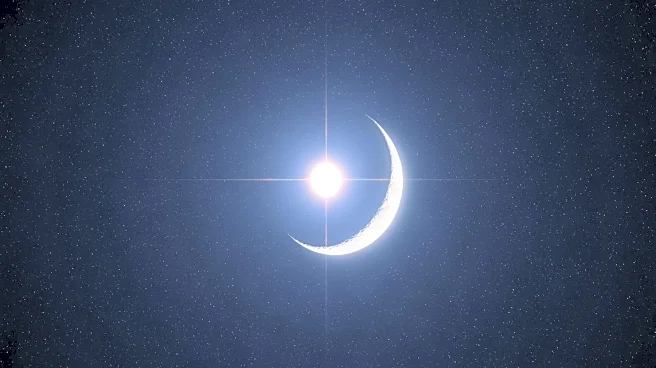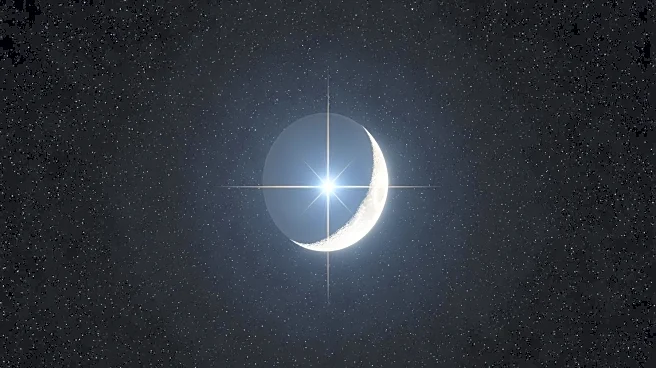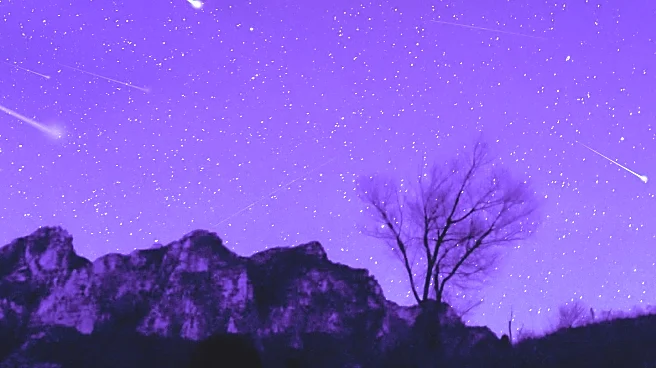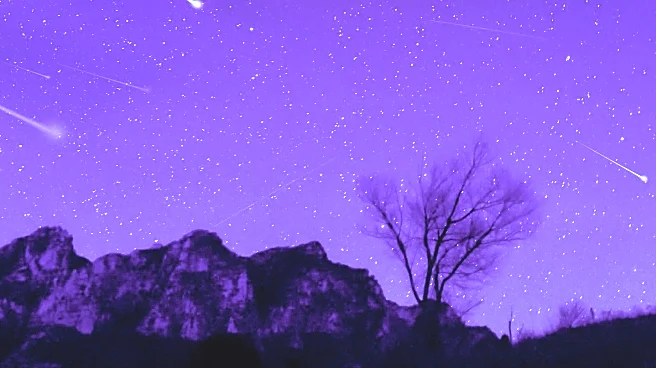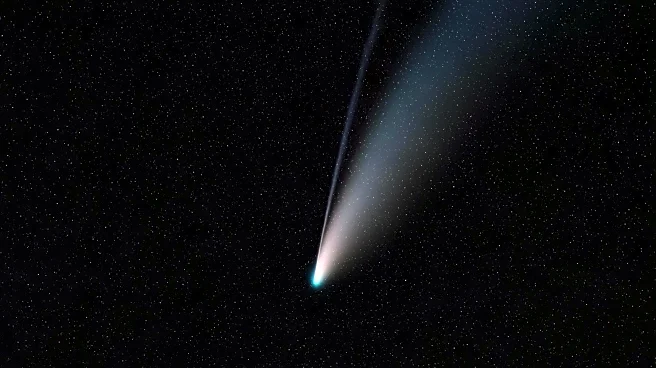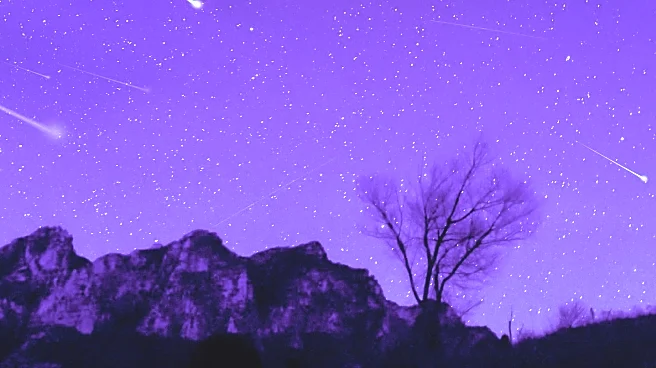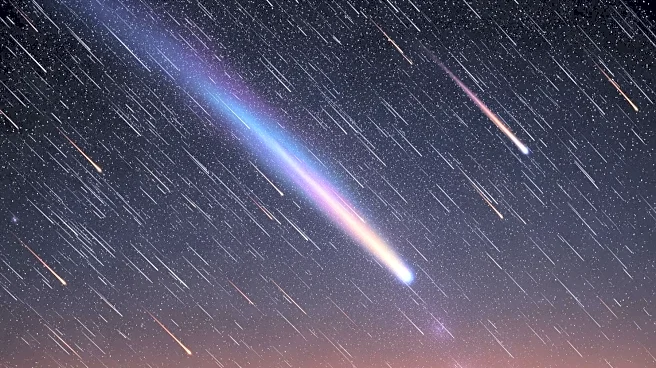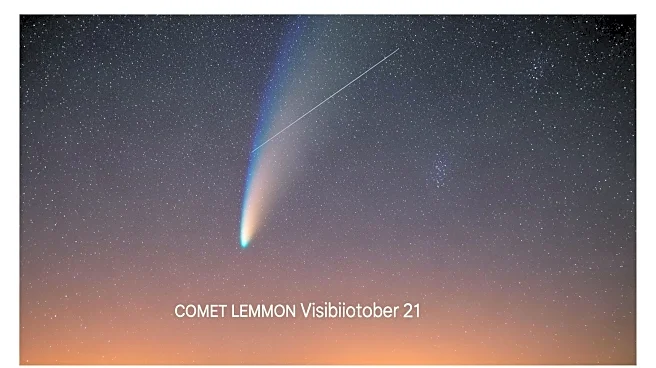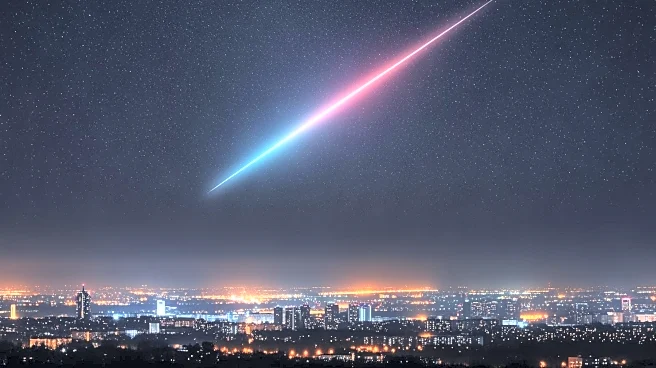What's Happening?
The new moon of October 2025 is set to create a unique celestial event by eclipsing the red supergiant star Antares, the brightest star in the constellation Scorpius. This event, known as an occultation,
will occur on October 24, 2025, and will be visible from specific locations in the Southern Hemisphere, including Ushuaia, Argentina, and Punta Arenas, Chile. The occultation will begin at 10:35 p.m. local time in Ushuaia, with Antares disappearing behind the moon's upper right quadrant and reappearing at 11:23 p.m. from the left side. This astronomical event coincides with the new moon phase, which will also provide dark skies for the peak of the Orionid meteor shower. Observers in the Northern Hemisphere, such as those in New York City, will not be able to see the occultation, but can still enjoy views of Saturn, Jupiter, and Venus in the night sky.
Why It's Important?
This celestial event is significant for astronomers and stargazers as it provides a rare opportunity to observe an occultation of a bright star by the moon. Such events are not common and require specific geographical positioning to be observed. The occultation of Antares offers a chance for scientific observation and public engagement with astronomy, potentially inspiring interest in celestial phenomena. Additionally, the timing of the new moon with the Orionid meteor shower peak enhances the stargazing experience, as the absence of moonlight will allow for clearer views of meteors. This event highlights the importance of astronomical events in fostering public interest in science and the natural world.
What's Next?
Following the occultation, stargazers can look forward to other celestial events, such as the visibility of Saturn, Jupiter, and Venus in the night sky. These planets will be visible at different times and positions, offering continued opportunities for observation. The next significant solar eclipse will occur on February 17, 2026, visible from Antarctica, providing another major event for astronomers and enthusiasts to anticipate. The ongoing observation of celestial events contributes to scientific research and public education, encouraging a broader understanding of our universe.
Beyond the Headlines
Occultations like the one involving Antares offer more than just a visual spectacle; they provide valuable data for astronomers studying the dynamics of celestial bodies. By observing the precise timing and path of the occultation, scientists can refine their understanding of the moon's orbit and the position of stars. This event also underscores the cultural and educational value of astronomy, as it connects people across the globe through shared experiences of observing the night sky. Such events can inspire future generations to pursue careers in science and technology, contributing to advancements in these fields.
